John Welton’s top 5 trees to plant in Spring
After one of the wettest winters, John Welton, local arboriculturist, encourages everyone into the garden to start planting, to help the planet – and yourself.
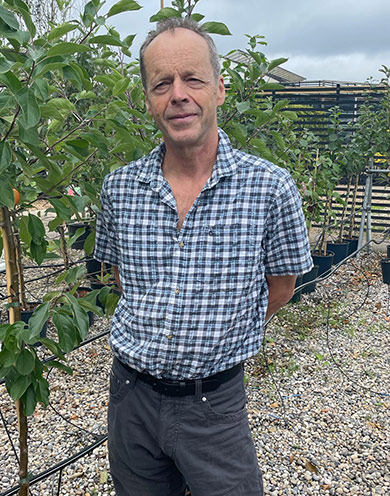
Local arborist John Welton
The health benefits of ‘Vitamin N’ (nature) are well documented. Sunlight exposure lowers stress hormones and can improve sleep. Fresh air can provide a natural energy lift without the jitters of coffee. Contact with soil promotes a healthy gut microbiome, while natural scents and sounds have a calming effect.
Here are five fantastic options that will not overwhelm your space:
Crab Apple (Malus Sylvestris)
This ornamental tree boasts stunning spring blossoms followed by pretty fruit in late summer. Crab apples come in various sizes, with some perfect for smaller gardens.
They also provide valuable food for wildlife.
Rowan (Sorbus Aucuparia)
Also known as the mountain ash, the rowan is a versatile and compact tree with attractive foliage that transforms into fiery shades of orange and red in autumn. The clusters of red berries are loved by birds, adding a touch of winter cheer.
Amelanchier (Amelanchier X Grandiflora)
This beautiful tree is adorned with a profusion of white flowers in Spring before the bronze-tinted leaves unfurl. It also offers vibrant autumn colours, making it a four-season delight for small gardens.
Prunus Amanogawa (Japanese Flowering Cherry)
This popular cultivar is a dream for small gardens with its columnar growth habit. Drenched in fragrant, shell-pink blossoms in mid-late spring, it adds a touch of elegance without sacrificing space.
Acer Griseum (Paperbark Maple)
Renowned for its stunning bark that flakes and peels to reveal a cinnamon-coloured under layer. The paperbark maple is a unique choice for a small garden. The delicate green foliage transforms into fiery shades of orange and red in autumn, providing year-round interest.
Remember to consider the amount of sunlight your garden receives, soil type, and your desired aesthetic when making your final selection.
Happy planting!
Winter in the garden
This season John Welton offers an insight to a hidden world of lichen that we can all explore
Lichens come to life in trees, shrubs and gardens in winter. Increased rainfall and lack of competing plant leaves give them more light and space to grow at this time of year. They can be regarded as our hidden rainforest - their colours and textures providing a blanket of natural beauty on close inspection.
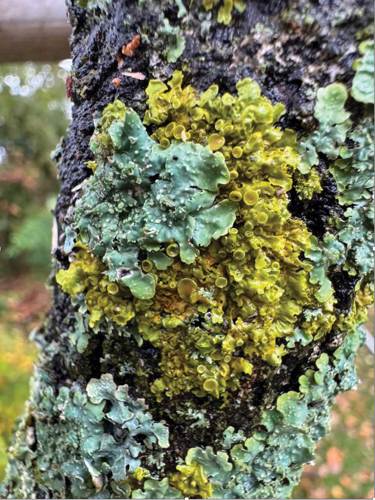
Lichens are an unusual living organism and are a combination of algae, fungus and cyanobacteria all working together. The outer skin and internal structure of a lichen is made of strands of fungal hyphae and interspersed inside are algae cells. This kind of interaction between different organisms is unique and called symbiosis or mutualism.
There are more than 18,000 different species of lichen worldwide with many more to discover. Most of their nutrients are absorbed from the atmosphere making them very sensitive to pollution. We can see though that locally in Dulwich a healthy range of thriving species.
We are still learning a great deal about this life form but they already brought great benefits to humans and in nature. In Japan, China and Korea, they are used in antibiotics and some cancer treatments. There are edible varities used in the UK and Europe. ‘Bread moss’ is a popular edible lichen in Scandanavia. As well as absorbing pollutants from the atmosphere, lichens provide important ecosystem services such as binding and building soil and fixing atmospheric nitrogen, providing delicate nesting material for birds and food for lots of invertebrates.
We simply need awareness and a close examination in the right place to discover this wonderful world of textures and colours. Phone cameras now have the technology to look up really close and take some great photos.
See what you can find!
Autumn in the garden
Clear out summer flowering containers and baskets
Replant pots for winter colour and fragrance, for example using pansies, cyclamen, primulas, bellis, heathers and heucheras.
Create layered bulb containers
Plant large bulbs at the bottom and smaller bulbs in the upper soil level. Large bulbs can include daffodils, tulips, hyacinths, allium and fritillaria. Smaller bulbs can include anemones, winter aconites, crocus, narcissi and muscari. Plant bulbs around 3 times their own depth. Ensure good drainage. You can still plant on top for winter as the spring bulbs will find their way through.
Clear out and spread compost
Improve your soil now and ensure good growth next year.
Net your pond
Especially important if it is under a tree.This prevents too many leaves from decomposing in the water and removing valuable oxygen.
Nurture berry-producing plants
Berries not only look fabulous but they feed birds and wildlife into the winter.
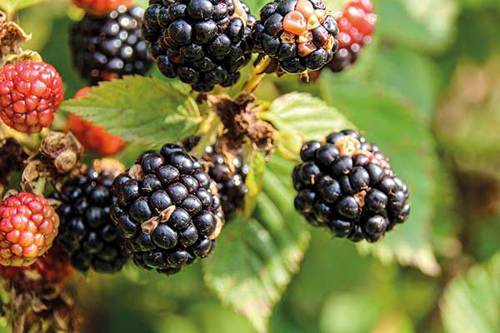
Leave seed heads standing
Allow some of your plants to go to seed in the autumn. This provides food for birds and other wildlife during the winter months.
Now is a good time for seeding or laying new turf
Consider wildflower turf that has already established wildflower plants that will spring into life next year. Alternatively consider reducing the size of your lawn and planting more diverse, low-maintenance ground cover. Lawns often require a lot of water, fertiliser, and maintenance.
Choose native plants for autumn planting
Select native plants for your garden as they are adapted to local conditions and support local wildlife. Native plants often require less water and maintenance.
Photograph dead wood in any trees
Make a plan for winter pruning. A photographic record creates a valuable reference for when there are no leaves.
Prune or thin summer flowering shrubs before the winter.
Make sure spring flowering shrubs are not pruned as the flower buds are already formed in most cases.
Spring in the Garden
Many Spring flowering shrubs need pruning shortly
after they have finished flowering to ensure a good display
of flowers next year and improve shape and form.
Arborist John Welton offers his best advice.
How to prune
• Avoid all-over reduction as this tends to create
dense regrowth losing the plant’s visible structure and creating a less attractive
ball of growth.
• Remove complete stems evenly inside the shrub to open it up. Try to remove poorly formed or weaker growth, and dead wood
leaving the best growth in place.
• After thinning, remove longer growths to form an attractive shape.
• Prune just after an old leaf joint as this is where the new growth will form.
Garden jobs for the coming weeks
This is a wonderful time to install a variety of bird boxes in trees and on house walls hopefully for this year’s nesting season.
Watch out for any pond activity - frog spawn, tadpoles, newts, damselflies, dragonflies and on the rare special occasion, toads (spawn is in strings, not clumps).
Leave an area of lawn uncut for spring flowers and do not cut too short for the first few cuts.
Take care not to tread or damage fast-growing delicate new growth from plants at ground level.
Ensure roses are pruned back to an outward-facing bud to ensure the plants new growth is open and well formed.
Trim away epimedium leaves to reveal their dainty hidden flowers.
Start to sow vegetable seeds in a greenhouse or cloche.
Keep that wild unkempt corner thriving for the insects and little animals.
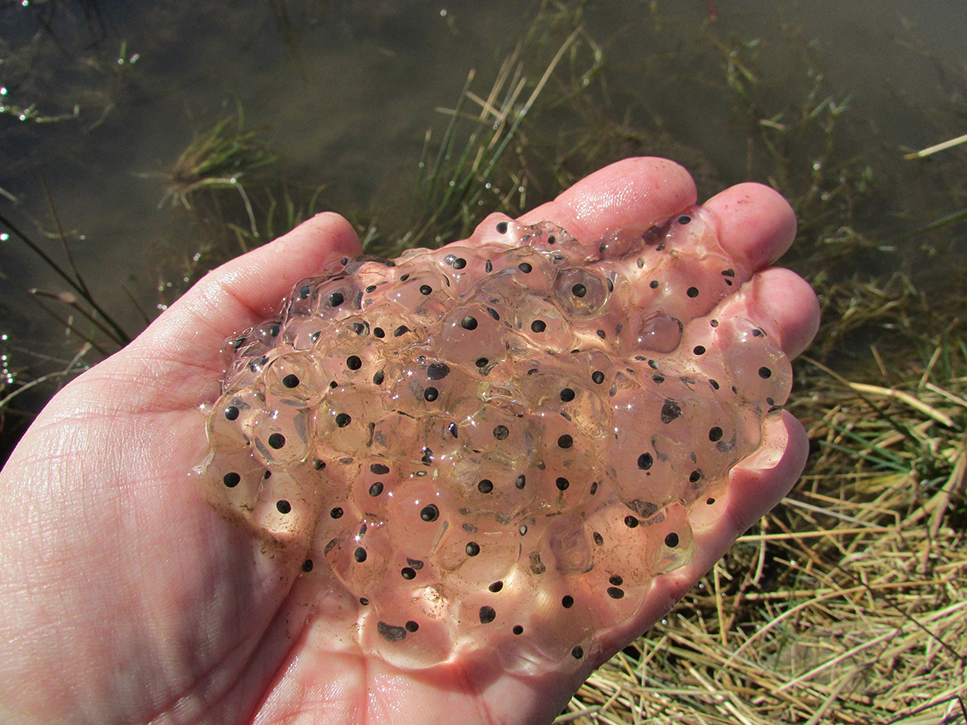
Winter in the garden
The impact of climate warming on the seasons and in particular drier autumns and milder winters, makes the coming months an optimal time to plant new trees and shrubs.
The ground is now pliable and plantable down to a good depth. Periods of severe frost
and frozen ground which makes planting challenging is also less likely.
This issue, I’m recommending my top 10 favourite garden trees which are ideal to plant now. They provide interest and biodiversity and importantly tolerate drought conditions once established, increasingly important with our record-breaking summer temperatures.
- Loosen the soil at the base of the hole to improve drainage and relieve compaction
- Plant the rootball level with surrounding soil
- Include a mycorrhizal feed mixed with the soil backfill
- Use a watering bag for the first year or two to slow release water in the warmer months
- Mulch 5-7.5cm deep around the surface of the tree
- Stake to minimise movement
Acer campestre (the UK’s only native Maple)
Wonderful small/medium character
tree with lovely small lobed leaves and yellow autumn colour.
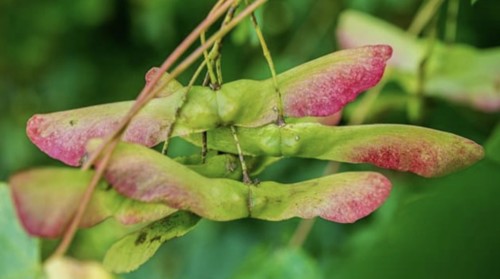
Arbutus unedo or Strawberry Tree (native Mediterranean)
Evergreen tree with amazing insect friendly flower and fruits produced simultaneously
in autumn. Fruits are edible.
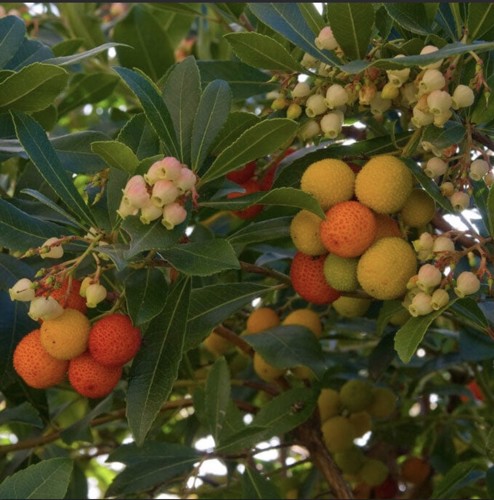
Azara microphylla ‘Variegata’ (native Chile, Argentina)
Evergreen tree with stunning dainty foliage with vanilla scented flowers in spring.
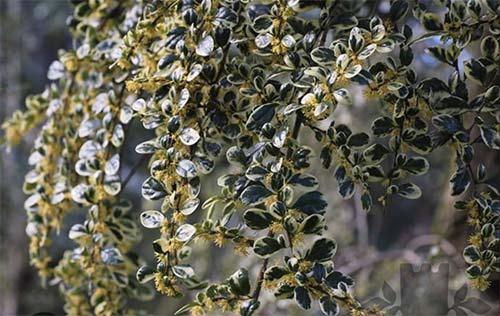
Clerodendrum trichotomum (native China and Japan)
Brilliant tree for summer interest with very fragrant white bee friendly flowers in July and August followed by bright blue berries in autumn.
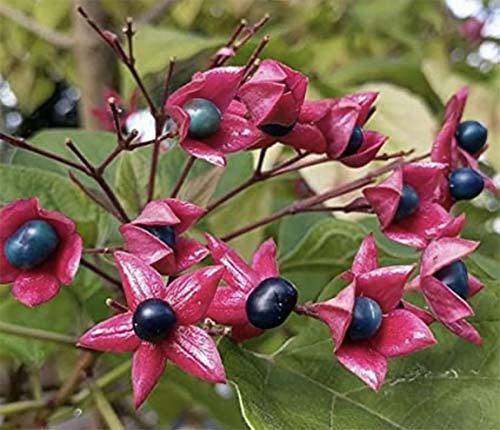
Crataegus crus-galli or Cockspur Thorn (native East USA)
Spreading tree with attractive flower and
long lasting red fruits for the birds.
Ginkgo biloba or Maidenhair Tree (native China)
Medium sized tree with amazing fan shaped leaves and beautiful clear yellow autumn colour.
Koelreuteria paniculata or Golden Rain Tree (native China and Taiwan)
Unusual slow growing tree with attractive small yellow flowers in July and August also with autumn colour.
Lagerstroemia indica or Crape Myrtle (native Korea and China)
Grey/pink bark with masses of rose pink flowers in autumn providing valuable late food for bees!
Mespilus germanica or Medlar tree (native Europe)
Character tree with wonderful, large white flowers for bees in May and June, followed by unusual fruits into the autumn.
Prunus padus or Bird Cherry (Native northern hemisphere)
Small/medium-size tree flowers small white almond scented in drooping racemes in May, followed by small black fruits the birds love.
Autumn in the garden
Give plants and trees time to recover from a dry summer before writing them off, says local tree expert John Welton
After the driest summer for many decades, the ground is bone dry to an unusual depth. Therefore planting is best delayed until late autumn or next spring when hopefully rainfall will have had a beneficial effect, although this will take time.
Trees and shrubs have in many cases reverted to survival mode, showing signs of stress with yellow and falling leaves. This can look like the plant is dead, but it is well worth close inspection by carefully scratching the surface of smaller stems to see if this reveals green live cells. Hopefully many will recover with water and show new growth in the spring.
Here’s what you can do to help:
Slow-release watering
Use an old bucket/watering can with a few small holes drilled in the bottom and placed in the root area of a stressed plant will effectively spot water to a reasonable depth without running off.
Mulching
This is a comfort to all plants and helps to keep water around the roots by reducing evaporation and insulating against heat and cold. You can use homemade compost, wood-chip or garden centre mulch available in bags.
Trimming
Carefully remove straggly, dead and out-of-shape growth back to a suitable side branch or outward-facing bud. Remove any weak branches that are rubbing, growing inwards or crossing over each other. Any dead growth on evergreens can be pruned back to live growth.
Compost heaps
Use compost on borders making space for this year’s leaves. If not yet ready, turn the compost and with rainfall, it should accelerate composting. Keep all the fallen leaves either in your compost bin or bag up and use them next year to add to your soil when planting or as a mulch.
Lawns
Grass should recover more quickly as it has shallow roots that quickly pick up rainfall. Once reinvigorated, feed with a high phosphate autumn fertiliser to help strengthen their roots for the winter. Any bare patches can be reseeded in October whilst the ground is still warm and by then you should not need to water.
Birdbaths
Keep these full of water and even add more around the garden. Many birds need water daily when it is dry. Start feeding birds again so they are prepared for the winter.
Summer in the garden
There are many things we can do to help with careful maintenance of plants, biodiversity and the environment, in some cases even helping to reduce household bills, says local aborist John Welton.
Avoid using any pesticides
Try to tolerate insect-nibbled plants and avoid using any pesticides. Rely on natural predators for like birds, hoverflies, ladybirds and beetles to create a balance in the garden. All insects are in decline and this is one thing we can do to make a difference. Plants can cope well with nibbled leaves.
Do not kill slugs and snails
They feed a plethora of wildlife including blackbirds, thrushes, jays, shrews, woodmice, newts, frogs and hedgehogs.
Natural deterrents
Try natural deterrents around the base of hostas to avoid slug and snail damage by using pistachio nut shells or wool pellets and garlic wash sprays.
Rainwater
Collect your own rainwater by linking a water butt from a roof down pipe. This water is far better than tap water for your indoor houseplants (you will notice the difference!) and also great for outdoor pots and birdbaths as it has no added chemicals and a more suited PH level for healthy plants. Even a bucket sunk in the ground will supply water to lots of wildlife and provide an additional habitat.
Do not water your lawn
Avoid watering your lawn as you can waste a huge amount of water and even when they look brown the roots are alive and will reactivate green growth when conditions improve.
Establish climbers
Establish climbers on suitable walls of your property for lots of reasons including insulation against heat and cold (saving power), wildlife habitat and of course the potential flower and foliage effect.
Wildlife garden gates
Make a wildlife garden gate and open up your neighbourhood territory for lots of small animals that can’t climb fences. Create a small gap at the base of boundary fence for frogs, newts, toads and of course hedgehogs to increase their territory. You can buy fence frames called ‘hedgehog highways’ that are very useful and provide a feature for the garden.
Spring in the garden
Make a positive contribution to slowing climate change and help reverse the decline in biodiversity. Here are a few ideas.
Mulch
Spread natural soil-improving layers on your borders, for example composted leaves or woodchip. It needs a depth of 2-3 inches. Established plants will growth through this but weed seed growth will be suppressed. It helps retain moisture during dry spells, gives protection against late frost damage and feeds the soil and beneficial worms over the longer term giving your garden extra resilience.
Let your lawn flower
Spring flowers will emerge if you stop mowing your lawn for a few weeks in Spring and the insects will get all the benefits when other flowers may be in shorter supply.
Make a wood pile
This can be a natural feature in a shady place in the garden and provide a habitat for a huge amount of insects and a protected feeding place for frogs, newts and toads.
Leave old stumps intact
You will be amazed at the amount of life decaying wood supports, for example the rare stag beetle larvae. They live for around 7 years before emerging as scary-looking but wonderful beetles. These beetles only survive in the south east.
Insect-friendly plants
Try and increase the number of plants with flowers suitable for insects. Avoid plants with double or multi-petals flowers.
Winter
Local arborist John Welton urges garden shelter for birds during the winter months
Long cold, wet and windy nights mean our native resident birds need garden shelter as they have nowhere else to go. It is so easy to forget them, but they are still in our garden, sleeping in protected places to survive.
Avoid winter tidy-ups of reducing shrubs, to ensure the very best night-time shelter for these birds. Wrens, thrushes and blue tits shelter in evergreen climbers in your garden like ivy, also honeysuckle, clematis armandii, climbing hydrangea, solanum and trachelospermum. Residual heat provided by walls and leaves are life-saving.
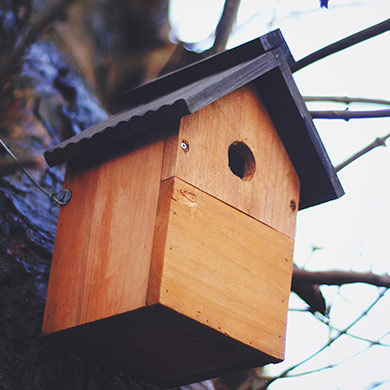
Bird boxes on the house wall or on outbuildings or in trees also provides valuable overnight shelter at this time of year.
Bird boxes on the house wall or on outbuildings or in trees also provides valuable overnight shelter at this time of year. Small birds that are more vulnerable like wrens and blue tits often come together to roost in nest boxes with amazing numbers - up to 60 wrens have been recorded in a box. Bird boxes serve an important dual purpose - winter retreat and spring nesting.
We are probably all aware of the increase in noisy parakeets - but the serious danger is the food sources they take from our native birds and their domination of highly sought-after tree nesting holes and cavities. We can all help. Leave out bird food, put up some bird boxes and stop tidying.
Autumn
The ground is still warm. New tree roots are active for a few weeks yet, allowing them to establish with the surrounding soil. This means a healthier, more resilient tree next year.
Trees are essential to our environment. They absorb carbon dioxide, reflect heat upwards and so provide cooling effect. They host complex microhabitats for insects, lichen and fungi, as well as a valuable food source for a wide variety of birds. And they absorb airborne pollutants, reduce noise and provide screening.
Right tree for the right space
Consider the available space and the potential size of tree in 10 years, existing neighbouring trees, seasonal interest preferences (for example spring flowering, bark colour/texture) and what wildlife can be supported. Native species are often the best performers in this area.
Dig a planting hole twice the width and only slightly deeper than the container the tree is in. Remove clay or larger stones. Loosen the bottom of the hole to help drainage. Make sure the rootball is positioned in the hole with its surface level with the surrounding soil and the tree is perfectly upright. Compost/mycorrhizal root can be mixed with backfill to improve soil before refilling around the rootball and firming in to remove air pockets. Mulching around the base of the tree with compost and woodchip will help prevent weed, retain moisture, insulate from heat and cold and improve soil in the longer term. Larger trees should be staked to stabilise roots and aid establishment. Water with about 20-30 litres of water to settle the root ball in place.

Rowan (sorbus aucuparia) - spring white flowers, orange autumn fruits and leaf colour.
5 favourite smaller species
I recommend these for wildlife biodiversity and interest:
- Rowan (sorbus aucuparia) - spring white flowers, orange autumn fruits and leaf colour.
- Hawthorn (crataegus monogyna) - white spring flowers and red autumn berries with leaf colour.
- Bird Cherry (prunus padus) - white racemes of almond scented flowers.
- Cornelian Cherry (cornus mas) - tiny yellow flowers before leaves in February and fruits in August.
- Cotoneaster Lacteus - evergreen small tree or large shrub with flowers in spring and masses of berries in autumn.


